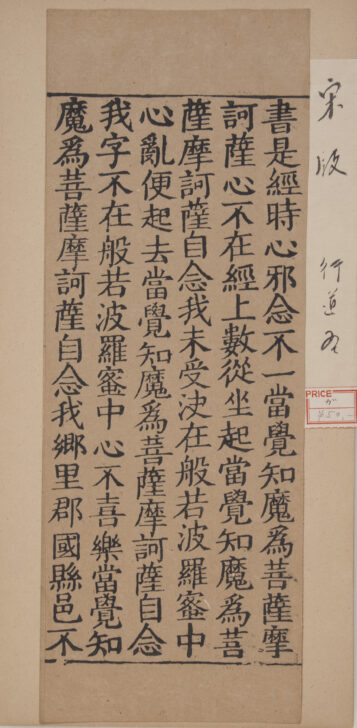Sample of Sanskrit Writing
Japanese

Description
Fragment of Sanskrit mantras
Japan
Edo period (1615–1868)
17th–19th century
Woodblock print on metallic-flecked paper
Gift of Ellen and Richard Laing, 2006/2.30
Originally Buddhist teachings were transmitted orally; later they were written down. These texts are known as sutras. The spread of Buddhism from India throughout Asia meant Buddhist texts were translated and recorded in various languages and in a range of formats and materials, and scripts. Sutra copying has also been a popular and powerful form of worship and merit-making across Buddhist traditions.
Some of the oldest known Buddhist manuscripts, which date to the first century, are from Gandhara (present day western Pakistan) and are written on birch bark. The sutra fragments from India on display here are incised on palm fronds, while a Korean example illustrates the use of indigo-dyed paper. While some of the sutra fragments have text in brushed calligraphy, others are printed with woodblocks. These variations were shaped by the producers’ cultures, the availability of materials and technologies, and the socio-economic level of the patron and/or copyist.
The sutras often promote the recitation, memorization, copying, and spread of Buddhist texts. One of the most popular, The Lotus Sutra, esteems someone who:
writes down or copies out even a single gāthā [verse] of the Lotus Sutra or who shall look with veneration on a scroll of this scripture as if it were the Buddha himself.
(translation by Leon Hurvitz)
Usage Rights:
If you are interested in using an image for a publication, please visit https://umma.umich.edu/request-image/ for more information and to fill out the online Image Rights and Reproductions Request Form.